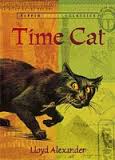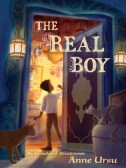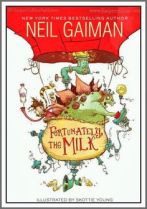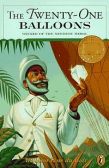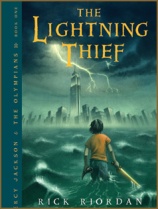
Cover of The Graveyard Book
This book was odd. My experience reading it went like this:
Spooky! Interesting idea, okay, yes, yes, weird. Weird. Hmm, do I like this? Who was the 33rd president of the United States? This book is weird and I’m not sure my students will get it. Ohhhhkay. Oh! Uh oh! Cool! Awwww. Happy/sad. The end.
I liked it, but I didn’t love it. Until I read the afterword, which is actually the transcript of the speech Neil Gaiman gave when he accepted the Newberry Award. And then, it was awesome.
So, the main plot is that in the first few pages of the book, a family is murdered by the man, Jack. His work is unfinished though, as the toddler of the family manages to walk out the front door and escapes into the graveyard across the street. The graveyard ghosts rally around to guard him from the killer and when the ghost of the baby’s mother shows up, they know they must keep him safe and protected. A ghostly couple, Mr. and Mrs. Owens, adopts the boy and names him Nobody, or Bod for short. Since they are ghosts, they cannot actually provide for him, so the caretaker of the graveyard agrees that he will bring food and clothes, and take care of the boy’s material needs. Silas is a mysterious figure throughout the book; he can leave the grounds, but seems bound to it in some way. (Can you guess his secret?)
Bod grows up with his ghostly family and he learns the ways of the graveyard. He can see in the dark, make himself invisible by Fading, and pass through walls as if he was a ghost as well. He is taught by poets and philosophers, meets witches, attends a ghostly dance ritual, travels to the underworld, and has an encounter with a real girl named Scarlett. Unfortunately, the man Jack is still trying to fulfill the task of killing Bod, and he is constantly in danger from this mysterious man.
All in all, this is a book about finding one’s own way and growing up. Bod must learn to walk among the living and the dead at the same time, and decide which life is preferable to follow. Like any good hero, he is pushed to his limits at problem solving and cleverness, but he also gets himself into a bit of trouble along the way.
I love Neil Gaiman’s other writings. I read a lot of British authors. I hope to be British when I grow up! My concern as I read this, since it is in my classroom library, was that I was not sure who I would pass this book off to next. Normally I finish I book and then hand it directly to the next reader. This one stumped me. Would my students get the references? Would they figure out the clues about Silas? Would it feel stiff and formal to them? I spoke to our school librarian who confessed that she hated the book and didn’t finish it! She also confessed to not liking Coraline either, so she agreed that perhaps she just didn’t like this author. A couple of students saw me reading it and also gave it a shot, but I’m not sure if anyone finished it. I’ll have to ask after vacation. This book proved to be a bit of a conundrum, and the more I talked people, the more I realized it was a love it/hate it book. As with any book, I say try it. If you don’t like it now, try it again later. You just never know!
At the end of the story is the speech Neil Gaiman gave when he won the Newberry Award in 2009. In it, he talks about growing up in the library, getting lost in the stories he found there, and how reading allows us to escape and try to experience things outside of ourselves.
I had forgotten what fiction was to me as a boy, forgotten what it was like in the library: fiction was an escape from the intolerable, a doorway into impossibly hospitable worlds where things had rules and could be understood; stories had been a way of learning about life without experiencing it, or perhaps of experiencing it as an eighteenth-century poisoner dealt with poisons, taking them in tiny doses, such that the poisoner could cope with ingesting things that would kill someone who was not inured to them. Sometimes fiction is a way of coping with the poison of the world in a way that lets us survive it.
And I remembered. I would not be the person I am without the authors who made me what I am–the special ones, the wise ones, sometimes just the ones who got there first.
It’s not irrelevant, those moments of connection, those places where fiction saves your life. It’s the most important thing there is.
…..We who make stories know that we tell lies for a living. But they are good lies that say true things, and we owe it to our readers to build them as best we can. Because somewhere out there is someone who needs that story. Someone who will grow up with a different landscape, who without that story will be a different person. And who with that story may have hope, or wisdom, or kindness, or comfort.
And then I loved this book.
The Graveyard Book has an AR level of 5.1 and is worth 10 points.
 I met Raina Telgemeier at the San Diego Comic Con a few years ago, and told her that her book Smile was the most frequently
I met Raina Telgemeier at the San Diego Comic Con a few years ago, and told her that her book Smile was the most frequently 
